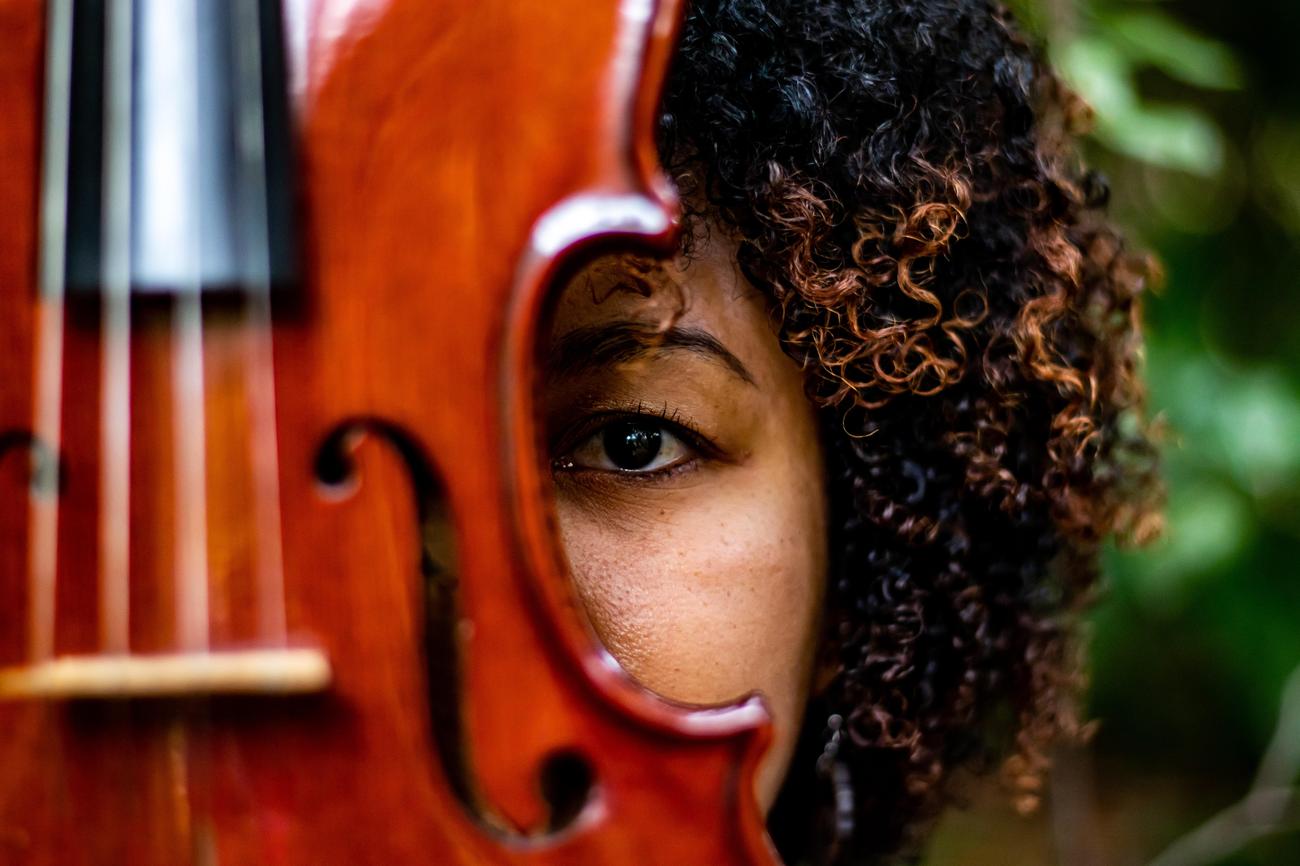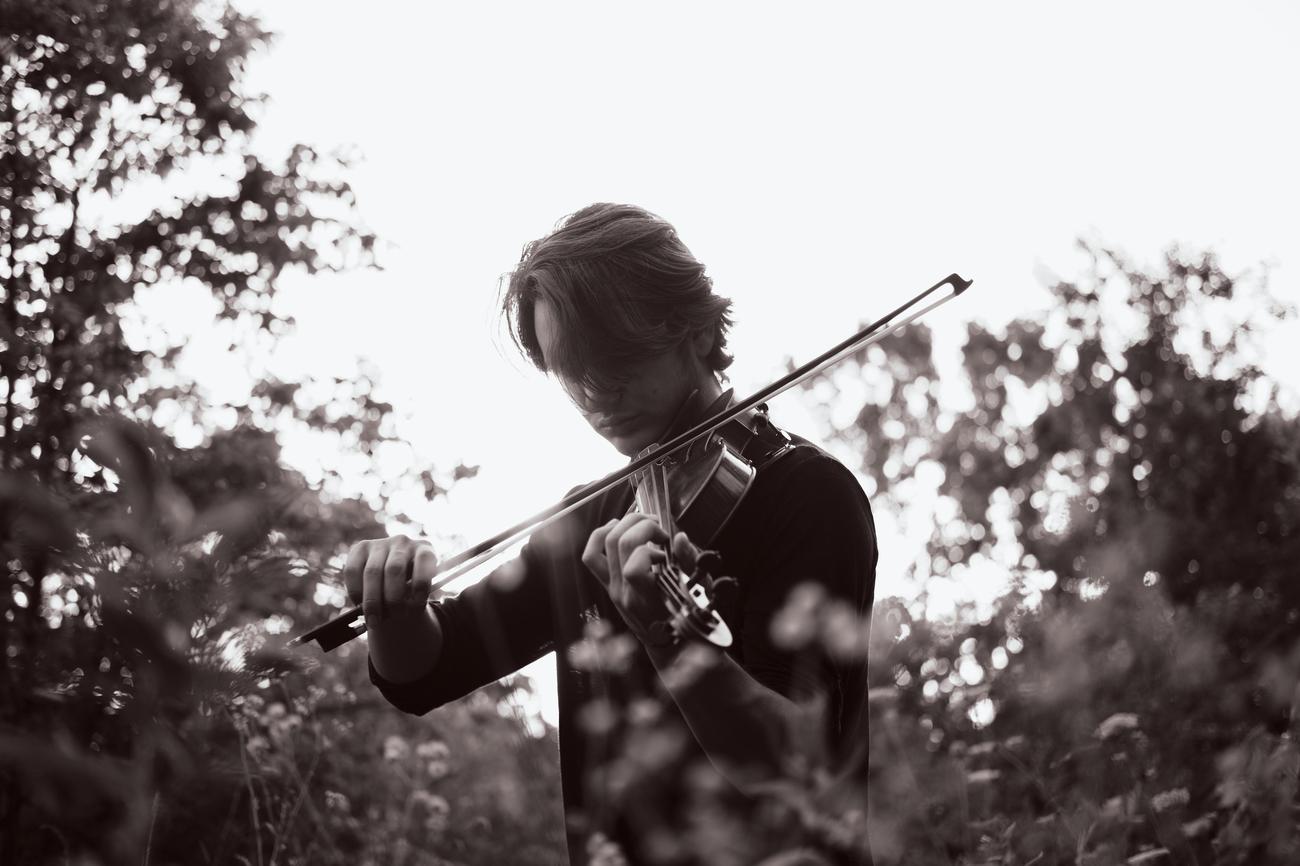Unveiling the Enchanting: 10 Captivating Facts About the Violin

As a seasoned music journalist and avid enthusiast of classical instruments, my passion lies in delving into the world of stringed masterpieces. With years of experience attending prestigious concerts and interviewing world-renowned musicians, I have gathered a vast array of knowledge and insights into the captivating realm of the violin. In this article, I will unveil three fascinating facts about this enchanting instrument. From its intricate techniques to its historical significance and cultural impact, the violin has a timeless beauty that continues to stir souls with its melodious charm. Join me on this journey as we unlock the secrets and unravel the mysteries surrounding the violin, and discover why it holds a special place in the hearts of many music lovers around the world.
10 Facts About the Violin
The world of the violin is a treasure trove of captivating facts that will undoubtedly leave you mesmerized. So, let’s dive right into the enchanting world of this majestic instrument and uncover its fascinating secrets.
Fact 1: The Inception of a Timeless Masterpiece
The creation of the modern violin dates back to the 1500s, where the genius luthier Andrea Amati designed this iconic instrument. Its impeccable craftsmanship has stood the test of time, captivating audiences for over 500 years. With its elegant curves and intricate details, the violin is truly a work of art that continues to inspire musicians and listeners alike.
“The violin’s creation by Andrea Amati marked the birth of a timeless masterpiece, embodying centuries of musical heritage.”
Fact 2: The Legend of Guarneri
When it comes to expensive violins, one name reigns supreme: Guarneri. Giuseppe Guarneri, an acclaimed luthier from the 18th century, crafted some of the most coveted violins in the world. These treasured instruments, played by virtuosos like Henry Vieuxtemps, have become priceless heirlooms that perfectly blend exceptional sound quality and exquisite craftsmanship.
“Guarneri’s violins are truly the epitome of luxury and represent the pinnacle of musical craftsmanship.”
Fact 3: From Guts to Strings
Did you know that the strings of the violin were originally made from dried animal intestines? It’s a fascinating historical fact that adds to the instrument’s mystique. The word “violin” itself even harkens back to this era, as it originates from the Latin word “vitula,” meaning calf or cow. It’s incredible to think that the soul-stirring melodies of the violin were once produced by such humble materials.
“The violin’s journey through time encompasses centuries-old traditions that connect us to the rich history of music.”
Fact 4: Caloric Symphony
Playing the violin not only enchants the ears but also provides a surprising benefit for the body. A violinist can burn around 170 calories per hour while playing this captivating instrument. So, not only does the violin offer an escape into the realm of music, but it also offers a delightful way to stay fit and energized!
“Playing the violin is like embarking on a captivating musical journey that harmonizes the mind, body, and soul.”
Fact 5: A Curious Kinship
The violin is part of a larger family of stringed instruments, intriguingly connected by their similarities in construction and sound. The viola, cello, and double bass are all siblings to the violin, albeit with their own unique characteristics. Together, they form a harmonious kinship, with the violin leading the pack with its distinct voice and versatility.
“Just like a family, these stringed instruments create a symphony of sound, each contributing its own distinct voice.”
Fact 6: The Bow’s Dance
A violinist’s bow is an extension of their very soul, enabling them to bring the instrument to life. Crafted from fine materials such as pernambuco wood, carbon fiber, or even gold, the bow dances across the strings, coaxing out incredibly nuanced and expressive tones. The bow is a violinist’s partner, guiding them through the intricate melodies and allowing their emotions to resonate with every stroke.
“As the bow glides across the strings, it’s as if every note becomes an extension of the violinist’s very being.”
Fact 7: The Soulful Resonance
What gives the violin its renowned and soul-stirring sound? It all comes down to the materials used in its construction. The body of the violin is usually crafted from select woods, such as spruce for the top and maple for the back and sides. These tonewoods, carefully chosen for their acoustic properties, create the perfect resonance that allows the violin to sing with heartfelt emotion.
“The violin’s rich timbre resonates with every note, allowing it to communicate the deepest of emotions.”
Fact 8: A Technological Leap
While the violin has remained relatively unchanged in its design for centuries, there have been some modern innovations to enhance its playability. From the introduction of synthetic strings to the development of electric violins, these technological advancements have opened up new possibilities for musicians to explore and push the boundaries of traditional violin playing.
“Amidst the timeless elegance, the violin embraces the wonders of modern technology, allowing for new artistic expressions.”
Fact 9: A Symphony in Wood
Hidden beneath the polished surface of the violin lies a complex network of internal components that contribute to its magnificent sound. The soundpost and bass bar, delicately positioned within the instrument, play a vital role in shaping the vibrations and resonance of the violin. These unsung heroes work in harmony, elevating every note to its full potential.
“Like a symphony in wood, the violin’s internal components create a harmonious balance that brings its tonal brilliance to life.”
Fact 10: A Journey of Mastery
Mastering the violin is a lifelong pursuit, requiring years of practice, dedication, and unwavering passion. From the delicate art of bowing to the intricate finger placements on the fingerboard, every step of the violinist’s journey is filled with challenges and rewards. Yet, the joy of creating breathtaking music and witnessing the emotional impact it has on others makes every moment of this musical odyssey worthwhile.
“Beneath the fingers and bow of a skilled violinist lies an unyielding dedication that elevates the experience of music to something truly extraordinary.”
10 facts about the violin:
As we delve into the enchanting world of music, let’s explore the wonders of the violin, an instrument that has captivated audiences for centuries. Did you know that the worlds smallest violin is a remarkable creation? This miniature wonder emits a mesmerizing sound that will transport you to another realm. But wait, let’s not forget about the technicalities. How many strings does a violin have? The answer is four, each producing a unique and harmonious tone that resonates deep within your soul.
Now, let’s unravel the mysteries surrounding the distinction between a fiddle and a violin. You may be surprised to learn that these terms actually refer to the same instrument, with slight variations in style and playing technique. Embrace the opportunity to explore the fiddle’s vibrant melodies, slightly deviating from the traditional sounds of a violin.
Once you’ve grasped the essence of this extraordinary instrument, it’s time to master the art of holding a violin bow. This is where true magic happens. Discover the delicate balance required to create those ethereal melodies that have the power to evoke profound emotions. Our guide on how to hold a violin bow will equip you with the essential techniques to embark on your musical journey.
Join us as we delve into the depths of musical artistry. Let the worlds smallest violin, the intricacies of its strings, the difference between a fiddle and a violin, and the secrets of holding a violin bow captivate your imagination. Prepare to be enchanted by this enchanting instrument, and explore these fascinating topics. Follow the links below to unravel the magic within each one:
- worlds smallest violin
- how many strings does a violin have
- what is the difference between a fiddle and a violin
- how to hold a violin bow
3 Interesting Facts About the Violin
Fact 1: The Violin, a Timeless Treasure
The violin, with its melodious resonance and elegant curves, has an intriguing history that dates back nearly 500 years. It was in the 1500s that the illustrious Italian luthier Andrea Amati designed this exquisite instrument, a masterpiece that has captivated audiences ever since. It’s astonishing to think that the violin we know today can trace its lineage back to those early designs, crafted with utmost care and precision by talented artisans. This timeless treasure is not only an instrument but a testament to the enduring power of human creativity and ingenuity.
“The violin’s roots can be traced back to the pioneering work of Andrea Amati, an Italian master craftsman whose vision shaped the instrument we know and love today.”
Fact 2: The Violin’s Evocative Origins
Have you ever wondered how the violin got its name? It turns out that the word “violin” has an intriguing etymology, originating from the Latin word “vitula,” which means calf or cow. This name reflects an interesting aspect of violin-making history – the strings were initially fashioned from dried animal intestines. This ancient practice provided the instrument with its signature warmth and resonance. While modern violin strings often utilize synthetic materials, we can still appreciate the instrument’s rich heritage and connection to the animal kingdom.
“The violin derives its name from the Latin word ‘vitula,’ bringing to mind the instrument’s centuries-old roots and the innovative use of animal intestines to create its strings.”
Fact 3: The Violin’s Diverse Musical Journey
The violin’s versatility transcends time and musical genres. While commonly associated with classical music, this enchanting instrument has made its mark in various styles, including folk and contemporary compositions. In fact, the violin carries a dual identity, with a distinction between a violin and a fiddle. The fiddle, often associated with spirited folk music, is played in a less formal and more relaxed style compared to the classical violin. This contrast adds another layer of depth to the violin’s melodic journey, highlighting its ability to evoke a wide range of emotions and connect with audiences across diverse cultural landscapes.
“From the grandeur of classical symphonies to the rustic charm of folk melodies, the violin’s versatility and adaptability have enabled it to traverse a diverse musical landscape.”
Now that we’ve unveiled three captivating facts about the violin, we can appreciate its rich history, evocative origins, and boundless musical potential. Next time you hear the soul-stirring melodies of this majestic instrument, let yourself be transported to a world where beauty and emotion intertwine, and where the violin reigns supreme as the conductor of our hearts.
In summary:
– Fact 1: The violin’s history stretches back almost 500 years, originating from the designs of Andrea Amati in the 1500s.
– Fact 2: The word “violin” finds its roots in the Latin term “vitula,” which reflects the instrument’s association with animal intestines used in its original strings.
– Fact 3: The violin’s musical influence extends beyond classical music, encompassing genres such as folk, showcasing its versatility and ability to evoke diverse emotions.
And so, we uncover the magical allure of the violin—one of the most captivating instruments ever created.
15 Interesting Facts About the Violin
[youtube v=”XsfjFRIAz2w”]
Fact #1: A Timeless Design
The design of the modern violin has remained largely unchanged for over 500 years. Whether it’s your grandmother’s cherished instrument or a brand new one, the design remains consistent, showcasing the enduring craftsmanship and elegance of this timeless musical instrument[^1^].
Fact #2: The Perfect Blend of Woods
Violins are traditionally made from maple and spruce woods, chosen for their unique acoustic properties. The longer the wood is aged, the richer and warmer the tones it produces. It’s fascinating to think that the materials used in creating a violin greatly influence the sound it produces[^2^].
Fact #3: A Complex Work of Art
At first glance, the violin appears delicate and intricate. In reality, it is made up of over 70 individually crafted wooden pieces that come together to create this beautiful instrument. Every component plays a crucial role in producing its unique sound[^3^].
Fact #4: The Origin of the Word “Violin”
Have you ever wondered where the word “violin” came from? Well, it actually comes from the Latin word “vitula,” which means “stringed instrument.” This ancient instrument has its roots deeply embedded in history, standing the test of time[^4^].
Fact #5: The Evolution of Violin Strings
Did you know that the strings of early violins were actually made from sheep guts? Thankfully, modern violin strings have evolved and are now typically made of steel or synthetic materials, ensuring durability and a clear, resonant sound. It’s interesting to learn about the evolution of the materials used in creating this instrument[^5^].
Fact #6: Outfitted with Horse Hair
The bow of a violin is adorned with horse hair, which produces the friction needed to create sound when it meets the strings. Contrary to popular belief, the horses are not harmed during the process of obtaining the hair. Much like a haircut, it is painless for the horse[^6^].
Fact #7: Counting the Hairs on a Violin Bow
Have you ever given thought to how many hairs are on a violin bow? Surprisingly, there are between 150 and 200 hairs on a bow. It may seem like a small number, but collectively, they contribute to the bow’s ability to create beautiful music[^7^].
Fact #8: A Calorie-Burning Musical Workout
Playing the violin isn’t just a way to create beautiful music; it can also be a workout! Believe it or not, playing the violin can burn up to 170 calories per hour. So, if you’re looking to stay active while honing your musical skills, the violin may just be the right instrument for you[^8^].
Fact #9: Mozart’s Musical Journey
We all know Mozart as a talented pianist and composer, but did you know his first instrument was actually the violin? This stringed instrument played a significant role in his musical development and paved the way for him to become the renowned composer we know today[^9^].
Fact #10: A Faster Brain
Playing the violin has been shown to improve cognitive function, particularly the brain’s processing speed. The intricate movements and multitasking involved in playing this instrument engage various parts of the brain simultaneously, leading to enhanced brain power[^10^].
Fact #11: Enhancing Memory
Learning to play the violin at a young age can have a positive impact on memory function. The complexity of playing this instrument strengthens neural pathways, improving memory and cognitive abilities as a person grows older[^11^].
Fact #12: The Distinction Between Fiddle and Violin
Ever wondered about the difference between a fiddle and a violin? In essence, they are the same instrument, but the terminology used depends on the style of music being played. The fiddle is more often associated with traditional folk and country music, while the violin is primarily associated with classical music[^12^][^13^].
Fact #13: The Violinist as a Conductor
Before conductors existed, it was the violinist who held the leadership role during an orchestra concert. They were responsible for guiding the entire ensemble, setting the tempo, and providing musical cues. It’s fascinating to think about the violinist’s influential position in the orchestra’s early days[^13^].
Fact #14: The Million-Dollar Violin
Imagine owning the most expensive violin ever sold, valued at a staggering $16 million. This exceptional instrument was purchased by an anonymous buyer who graciously loaned it to renowned violinist Anne Akiko Meyers. The violin represents the pinnacle of craftsmanship and the value that collectors place on these instruments[^14^].
Fact #15: The Transformation of Bow Design
Bows for violins have undergone significant changes throughout history. Before the 19th century, bows were shaped like hunting bows, curved in the opposite way compared to today’s bows. The curved design we see today, resembling a rainbow, came into existence during the 19th century. It’s interesting to explore how bow design evolved over time[^15^].
The violin, with its rich history, complex construction, and ability to captivate audiences, is truly a remarkable instrument. From its timeless design to the intricacies of its strings and bows, every aspect of the violin contributes to its enduring appeal. Whether you’re a musician, a music enthusiast, or simply someone intrigued by the violin’s charm, these fifteen facts shed light on the incredible world of this beloved instrument.
So, which facts did you already know? Which ones were new to you? Comment below and share your thoughts!
[Reference]
[^1^] Booth Music. “15 Fun Facts About The Violin.” YouTube, uploaded by Booth Music, 5 May 2021, 15 Fun Facts About The Violin.

FAQ
Question 1
What is the history behind the violin?
Answer 1
The violin has a rich history dating back almost 500 years. It was designed in the 1500s by Andrea Amati, an esteemed luthier.
Question 2
How expensive can a violin be?
Answer 2
Violins can be incredibly valuable, with the most expensive violin in the world dating back to 1741 and being valued at a staggering $18 million.
Question 3
What is the origin of the word “violin”?
Answer 3
The word “violin” originates from the Latin word “vitula,” which means calf or cow. This is a reference to the use of dried animal intestines to create the instrument’s strings.
Question 4
What material were violin strings originally made from?
Answer 4
Originally, violin strings were made from dried animal intestines. However, modern violin strings can be made from synthetic materials as well.
Question 5
Is playing the violin a physical activity?
Answer 5
Yes, playing the violin can be considered a workout. It is estimated that playing the violin can burn around 170 calories per hour.
- SYBAU See You Baby Meaning: Gen Z Slang Evolves - July 1, 2025
- Unlock Your Inner Youth: Lifestyle Secrets for a Vibrant Life - July 1, 2025
- Decode SYBAU Meaning: Gen Z Slang Explained - July 1, 2025






